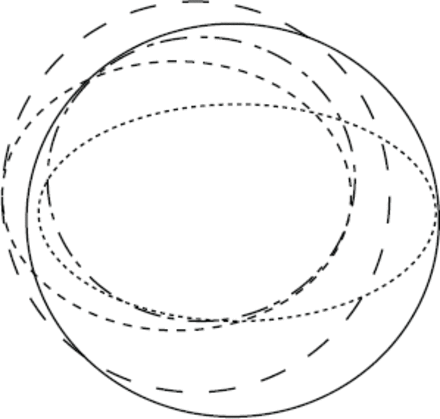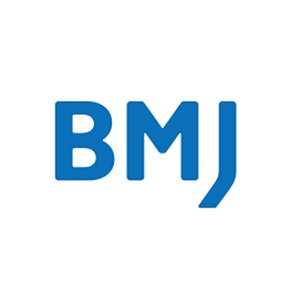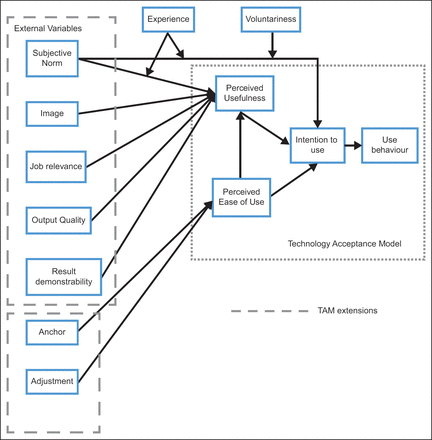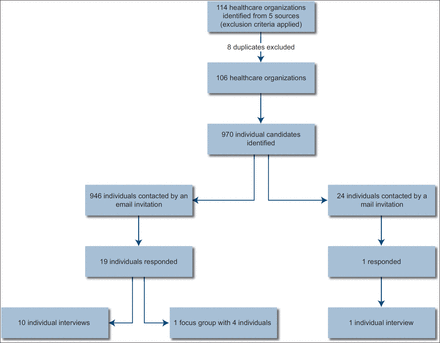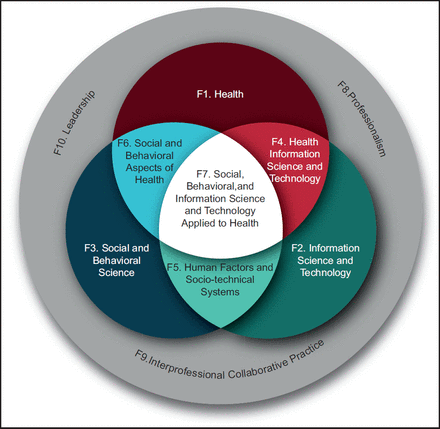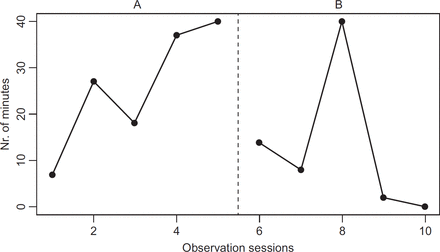Abstract
Background Low back pain (LBP) is a complex health care issue that often involves multiple providers across various care settings. Health information technology holds promise to improve care delivery by providing infrastructure for communication, clinical documentation and management of patient data. Standardised terminology is essential for interoperability and enables evaluation of clinical data generated by documentation in an electronic health record (EHR).
Objective The purpose of this study was to demonstrate the feasibility of mapping evidence-based practice (EBP) for conservative management of LBP to the Omaha System and foster inter-professional communication and collaboration among diverse practitioners and patients.
Methods EBP guidelines for non-invasive treatment of LBP were mapped to the Omaha System using a clinical expert approach with attention to content feasibility, linguistic validity and granularity of terms.
Results A clinical guideline for LBP management was developed consisting of 13 interventions for pain and neuro-musculo-skeletal problems. The most common intervention categories were case management followed by treatments and procedures, teaching, guidance, and counselling and surveillance. Scope of practice overlap was identified among primary care, chiropractic and physical therapy practice.
Conclusion Use of the guideline may facilitate clinical documentation using the Omaha System for LBP management and has potential to generate meaningful data to evaluate clinical effectiveness and promote quality research. The use of encoded EBP evidence within an EHR can increase the use of available evidence, enable interprofessional communication, improve quality of care, and enhance the usability of data across care settings.
BACKGROUND
Pain conditions are well recognised as an enormous burden to individuals and society, with back pain being the most commonly reported (National Health Interview Survey, 2012). Low back pain (LBP) is the fifth most common reason for all physician visits in the United States where approximately one quarter of U.S. adults report having had LBP for at least one whole day in the past 3 months.1 LBP ranks as the sixth most-costly health condition with estimates of incremental health care expenditures for spine problems calculated at $86 billion per year.1–3
Non-specific LBP is characterised by the absence of an identifiable underlying disease process and is often complex and challenging to manage. Evidence-based guideline recommendations emphasise conservative management involving patient education and analgesic medications of acetaminophen and nonsterodial anti-inflammatory preparations, with the cautious use of opioids.4 However, physician adherence to guidelines may not be optimal,5,6 where opioids represent the most commonly prescribed drug class for back pain,6 and more than half of regular opioid users continue to report back pain.6,7
Research suggests LBP that has become chronic is the most difficult to manage.5,6 Multiple providers managing an individual’s LBP can lead to fragmented care and frustration for both patients and practitioners.5 Such siloed healthcare can compromise communication for the health care team, lead to poor care coordination, and decrease the continuity of care.8
The National Institute of Health Pain Consortium9 was established to foster collaboration across provider disciplines and develop new innovative multidisciplinary approaches to pain management. Health information technology (HIT) holds promise to improving care delivery across multiple care settings by providing infrastructure and support for communication, clinical documentation and management of patient data.8
The electronic health record (EHR) provides infrastructure and support for communication, collaboration and care coordination.8 In order to allow for information exchange and shareable data within an EHR, it is essential to use data standards such as a standardised terminology within a documentation system.10 Standards and interoperability within HIT, such as an EHR, combine comprehensive clinical information from a diverse set of data sources to support many healthcare processes including direct patient care, population health management, quality improvement and comparative effectiveness research.9 These demonstrable linkages enable patient-centered care planning and documentation, facilitate information exchange and research ready data. The true value and power of exchanging holistic and integrative patient data to support patient-centered care has yet to be fully realised.11 A majority of patient data is collected and stored in a variety of untouchable sources with differing codes, identifiers and terminology. In an era of data-driven healthcare, it is critical to use tools that can facilitate documentation, communication and evaluation of healthcare practices.9
OBJECTIVES
The purpose of this study was to demonstrate the feasibility of encoding EBP guidelines for LBP using a standardised interface terminology.12
Evidence-based practice and managing LBP
Evidence-based practice (EBP) is a patient care problem solving approach to clinical decision making within a healthcare organization that integrates the best available science and clinical evidence from both the patient and the provider.13 Practice recommendations drawn from guidelines and systematic reviews follow a rigorous development process and are based on high-quality scientific evidence. For the purposes of this study, evidence was identified to provide a complete and integrative best practice approach to non-invasive management of LBP. A key point of the evidence used in this study is the inclusion of multidisciplinary providers as an integral part of the patients’ holistic plan of care.
The Omaha System: interface terminology and health ontology
The standardised terminology selected for this study is the Omaha System. The Omaha System is a research-based comprehensive practice and documentation standardised taxonomy designed to describe client care.14 The Omaha System is a multidisciplinary interface terminology that is used for encoding EBP and enabling data capture and exchange.14 The Omaha System includes an assessment component (Problem Classification Scheme), a care plan/services component (Intervention Scheme), and an evaluation component (Problem Rating Scale for Outcomes).12 For the purpose of this article, ontology refers to a framework that represents a body of knowledge.15 A taxonomy refers to the science of classification and arrangement of terms and concepts at levels from general to specific, according to established principles and rules.12 The Omaha System is a point-of-care terminology that avoids redundancy, is a patient-centered, and allows for data to be easily comparable for providers and patients.12,15 This system provides a systematic method to capture, document, monitor and measure patient-centered care.
RESULTS
There were thirteen interventions for six problems in three domains: mental health (psychosocial domain), pain and neuro-musculo-skeletal function (physiological domain) and health care supervision, physical activity and medication regimen (health-related behaviours domain). The most frequent problem was pain followed by medication regimen, neuro-musculo-skeletal function, physical activity, healthcare supervision and mental health. All of the four intervention categories were represented with case management being the most frequent, followed by treatments and procedures, teaching, guidance, and counseling and surveillance. There were six targets, with signs/symptoms-physical being the most frequent, followed by medical/dental care, medication prescription, wellness, exercises and signs/symptoms mental/emotional (Table 1).
Content validity was achieved using exact phrases from the Institue for Clinical Systems Improvement (ICSI) guideline and recommendations. For example, the PCTCD intervention regarding education in the Core Treatment Plan of the guideline is Clinicians should educate patients as an adjunct to other treatment. No standardised form of education is suggested. The PCTCD intervention for medication regimen in the core treatment plan recommends Non-steroidal anti-inflammatory drugs may be used for short-term pain relief in patients with acute and sub-acute LBP and cautious and responsible use of opioids may be considered for a limited period of time (Table 1).
Linguistic validity was achieved by reaching 100% consensus related to the interpretation of the meaning between the Omaha System term and the guidelines. The pain problem was them the most frequent problem selected, followed by neuro-musculo-skeletal function and medication regimen (Table 1).
Granularity was addressed by developing a drill-down approach and adhering to the levels of granularity in the guidelines and recommendations.15 The Core Treatment Plan from the guidelines consisted of 9 out of 13 interventions, with the remaining four interventions describing specific treatment options outside the Core Treatment Plan.
Analysis of role descriptions associated with the guideline interventions showed that the PC provider role was associated with 12 of 13 interventions (92.3%), followed by chiropractic and physical therapy with 11 of 13 interventions (85%), RN 8 of 13 interventions (62%), MT 7 of 13 (54%) and acupuncture 6 of 13 (46%). Five interventions were within the scope of all roles: initial assessment and identification of red flags, promote self-management, instruct patients on pain and activity management, address fear-avoidance beliefs and address mental health concerns (Figure 1).
DISCUSSION
This study examined the feasibility of mapping EBP guidelines for LBP to the Omaha System. Evidence-based LBP guidelines were mapped to problems, categories and targets, and guidelines were incorporated verbatim as Care Descriptions. The study demonstrates the feasibility of using the Omaha System to describe multi-disciplinary LBP management and highlights the diversity of practitioners that assess for pain, physical function, activity level and mental health needs. Mapping the LBP guidelines to six problems in three domains demonstrates the multi-faceted nature of LBP and points to the need for a comprehensive holistic approach to care. Further research is needed to evaluate the use of the EBP to promote improvement in LBP management, communication and care coordination.
Precise coding is critical for all intervention terms (PCTCD to accurately convey the meaning of the evidence and to maintain the quality of the data. The research team addressed content validity using a care description that matches the language within the evidence. This allowed the research team to specifically match the intervention based on the evidence and reduce redundancy or misinterpretation of the plan of care. The research team addressed linguistic validity, equivalence of meaning20 through the collaborative efforts of the teams Omaha System experts and clinical content experts during the encoding process. Omaha System questions were addressed by KM and the LBP content was addressed by CS. This allowed for an open informed dialogue throughout the process. Both terminology and clinical areas of expertise are essential to ensure accurate and clinically meaningful encoding.15 Granularity was achieved at the level of the guideline recommendations through customization at the care description level of the Omaha System.
This feasibility study is an initial step in the process of implementing standardised terminology within specialty fields of health care. It enables generating and collecting standardised data that may be used to evaluate adherence and impact of EBP on patient outcomes in a broad scope of provider types and aligns with previous findings regarding the feasibility of using the Omaha System for diverse practices, populations and problems.15 Standardised terminology can thus be used to link practice settings with academic research opportunities specifically to examine the relative effectiveness of care across multiple care settings addressing LBP.
In this study, the research team adhered to the evidence as published.4,16,17 Despite serious concerns related to abuse potential of opioids,6 non-invasive LBP guidelines still recommend conservative use of opioids for LBP management.4,16,17 It is critical that the governing bodies involved in disseminating LBP guidelines review and revise their recommendations to reflect the current best practices in opioid use.22
Post hoc analysis of the LBP guideline found that while there are common elements shared between all providers and there were striking similarities between the provider roles, no single team member role includes all interventions. These findings align with the literature supporting a team approach to LBP care, affirm the need for a team approach, and highlight the unique roles of health care team members in the non-invasive management of LBP.5 Interestingly, team members from Chiropractic and Physical Therapy shared the same interventions and thus appeared to have a similar scope of practice. Overall, these findings affirm the need for a seamless health information system to support excellence in team based.5
The value of standardised terminology and interoperable data is enhanced when a holistic patient record is shared across multiple care settings.8 This study is an initial step to providing a framework for encoding EBP evidence for LBP management and the potential to organise data related to best practices. Clinical documentation based on encoded EBP generates meaningful data that are appropriate for quality research and provide data to support the EBP. This study outlines the structure needed to continue to build evidence to support health outcomes for quality, multi-disciplinary LBP care.
CONCLUSION
Evidence-based LBP guidelines were mapped to the Omaha System. This study demonstrates the feasibility of using the Omaha System to describe the interventions and details the scope of practice for multidisciplinary teams treating LBP, thus translating guideline knowledge into practice. Furthermore, using the Omaha system to document LBP treatment has potential to enhance team communication and improve data quality. Further research is needed to evaluate the implementation of this clinical decision support design within an EHR. A pilot study applying the Omaha System encoded evidence in clinical practice will enable evaluation from the perspective of care providers in a clinical environment to evaluate acceptability and usability of the guideline to support practice and for use in EHRs to generate and exchange data.

